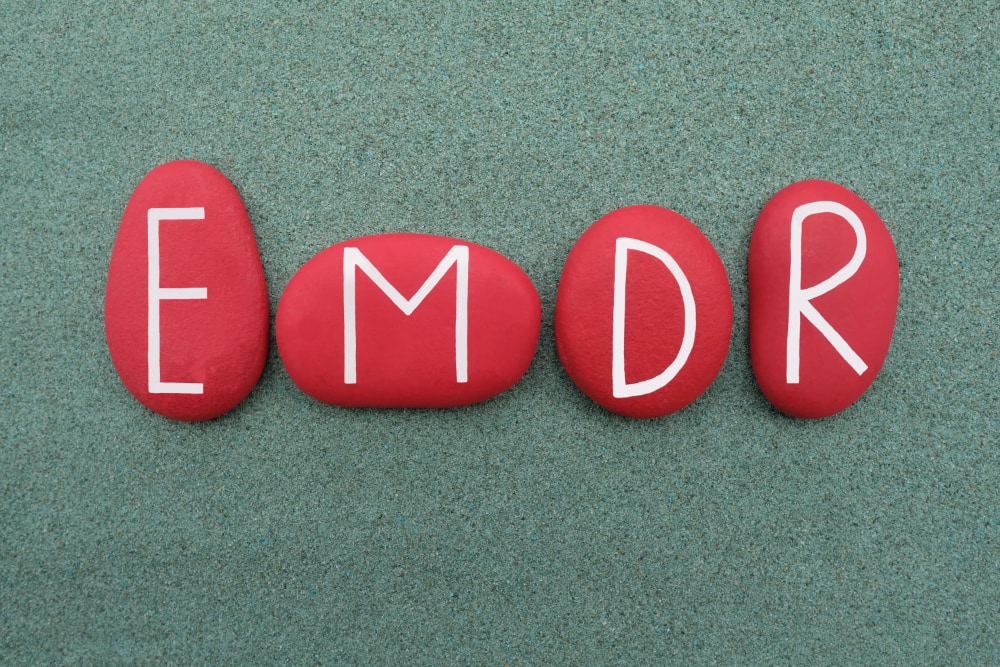EMDR Therapy Melbourne
Why Choose EMDR Therapy?
Eye Movement Desensitisation and Reprocessing (EMDR) Therapy is founded by Dr Francine Shapiro in 1987 for the treatment of post-traumatic stress disorder and is guided by the adaptive information processing model. Eye Movement Desensitisation and Reprocessing Therapy is a treatment method aimed at resolving emotional difficulties caused by disturbing, difficult, or frightening life experiences.
It is worth highlighting how the traumas that have not healed in this generation have the potential of being passed into the next. The sense of self in any child does not develop in isolation; in fact, it develops in the parent-child relationship and other important relationships early in life. We came to this world to connect with others and when these connections do not happen or they happen in a way that hurt us or injure us, our sense of self does not develop appropriately. In many cases having the child as well as the parent receive EMDR therapy may be recommended for best results. Sometimes the parent may be highly traumatized by living through the traumas of their children and the healing needs to take place in both, the child and the parent.

Sometimes because of the parents’ early experiences with their own parents, they may have difficulties setting boundaries with their kids, or they may be overprotective, neglectful, or abusive or too distant or too intrusive. Parent’s emotional problems can affect their children’s emotional, physical and psychological development. For instance, a parent with depression, without knowing or intending to, may neglect their child’s needs for connection and love. This can result in having a child with emotional and behavioural problems.
We are fortunate to have so many resources at our fingertips now that can assist in your healing. We all require assistance at some point in our life. We are biologically predisposed to rely on and require assistance from others. Never give up! There are numerous opportunities for healing and wholeness, and there is hope. Keep in mind that you don’t have to experience this alone. You can get help from EMDR therapists anywhere in the world.
EMDR therapy does not require you to explain or describe specific details of your traumatic experiences. This reduces your emotional pain of revisiting the experience by explaining it to your therapist repeatedly in full detail until you reduce its impact.

What happens when you are traumatised?
\Most of the time your body routinely manages new information and experiences without you being aware of it. However, when something out of the ordinary occurs and you are traumatised by an overwhelming event (e.g. a car accident) or by being repeatedly subjected to distress (e.g. childhood neglect), your natural coping mechanism can become overloaded. This overloading can result in disturbing experiences remaining frozen in your brain or being “unprocessed”.
Such unprocessed memories and feelings are stored in the limbic system of your brain in a “raw” and emotional form, rather than in a verbal “story” mode. This limbic system maintains traumatic memories in an isolated memory network that is associated with emotions and physical sensations, and which are disconnected from the brain’s cortex where we use language to store memories. The limbic system’s traumatic memories can be continually triggered when you experience events similar to the difficult experiences you have been through. Often the memory itself is long forgotten, but the painful feelings such as anxiety, panic, anger or despair are continually triggered in the present. Your ability to live in the present and learn from new experiences can therefore become inhibited.
EMDR helps create the connections between your brain’s memory networks, enabling your brain to process the traumatic memory in a very natural way.
EMDR utilises the natural healing ability of your body. After a thorough assessment, you will be asked specific questions about a particular disturbing memory. Eye movements, similar to those during REM sleep, will be recreated simply by asking you to watch the therapist’s finger moving backwards and forwards across your visual field. Sometimes, a bar of moving lights or headphones is used instead. The eye movements will last for a short while and then stop. You will then be asked to report back on the experiences you have had during each of these sets of eye movements. Experiences during a session may include changes in thoughts, images and feelings. With repeated sets of eye movements, the memory tends to change in such a way that it loses its painful intensity and simply becomes a neutral memory of an event in the past. Other associated memories may also heal at the same time. This linking of related memories can lead to a dramatic and rapid improvement in many aspects of your life.
EMDR therapy Melbourne is delivered on a one-on-one basis typically one to two times per week for a total of 6 to 12 sessions. However, this timeline could change based on the clients’ needs.
What can EMDR be used for?
In addition to its use for the treatment of Post-traumatic Stress Disorder, EMDR has been successfully used to treat:
- anxiety and panic attacks
- depression
- stress
- phobias
- sleep problems
- complicated grief
- addictions
- pain relief, phantom limb pain
- self-esteem and performance anxiety

Will I remain in control and empowered?
During EMDR treatment, you will remain in control, fully alert and wide-awake. This is not a form of hypnosis and you can stop the process at any time. Throughout the session, the therapist will support and facilitate your own self-healing and intervene as little as possible. Reprocessing is usually experienced as something that happens spontaneously, and new connections and insights are felt to arise quite naturally from within. As a result, most people experience EMDR as being a natural and very empowering therapy.
What evidence is there that EMDR is a successful treatment?
EMDR is an innovative clinical treatment which has successfully helped over a million individuals. The validity and reliability of EMDR has been established by rigorous research. There are now nineteen controlled studies into EMDR making it the most thoroughly researched method used in the treatment of trauma, (Details on www.emdr- europe.org and www.emdr.org) and is recommended by the National Institute for Health and Clinical Excellence (NICE) as an effective treatment for PTSD.



